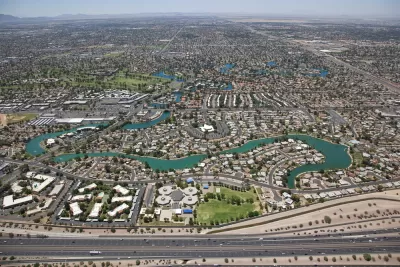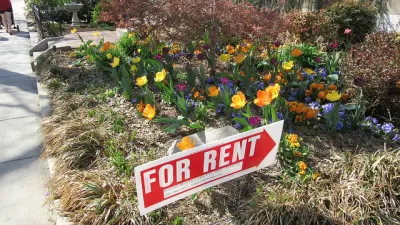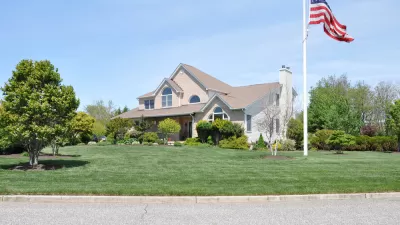The federal government has no official definition of suburban, even though a majority of Americans say they live in suburban communities.

Shawn Bucholtz and Jed Kolko describe one of the facts of American life: most U.S. residents live in suburbs, but the federal government doesn't actually categorize communities as suburban. The federal government makes a distinction between urban and rural, but not for suburban.
"The lack of an official federal definition of suburban means that government data are not reported separately for suburban areas. That makes it hard to measure the reach and impact of federal programs and to produce vital statistics about Americans and their communities," according to the article.
In a small step in the right direction, the 2017 American Housing Survey (by the Office of Policy Development and Research) recently released data finding "about 52 percent of people in the United States describe their neighborhood as suburban, while about 27 percent describe their neighborhood as urban, and 21 percent as rural." That's a majority, and it echoes previous surveys undertaken by outside the government.
In addition to advocating for the federal government o gather data in a way that reflects the way Americans view their communities, the article also tries a few other angles of approach for revealing more about the statistical realities of the suburbs in the United States.
FULL STORY: America Really Is a Nation of Suburbs

Maui's Vacation Rental Debate Turns Ugly
Verbal attacks, misinformation campaigns and fistfights plague a high-stakes debate to convert thousands of vacation rentals into long-term housing.

Planetizen Federal Action Tracker
A weekly monitor of how Trump’s orders and actions are impacting planners and planning in America.

Chicago’s Ghost Rails
Just beneath the surface of the modern city lie the remnants of its expansive early 20th-century streetcar system.

Bend, Oregon Zoning Reforms Prioritize Small-Scale Housing
The city altered its zoning code to allow multi-family housing and eliminated parking mandates citywide.

Amtrak Cutting Jobs, Funding to High-Speed Rail
The agency plans to cut 10 percent of its workforce and has confirmed it will not fund new high-speed rail projects.

LA Denies Basic Services to Unhoused Residents
The city has repeatedly failed to respond to requests for trash pickup at encampment sites, and eliminated a program that provided mobile showers and toilets.
Urban Design for Planners 1: Software Tools
This six-course series explores essential urban design concepts using open source software and equips planners with the tools they need to participate fully in the urban design process.
Planning for Universal Design
Learn the tools for implementing Universal Design in planning regulations.
planning NEXT
Appalachian Highlands Housing Partners
Mpact (founded as Rail~Volution)
City of Camden Redevelopment Agency
City of Astoria
City of Portland
City of Laramie





























